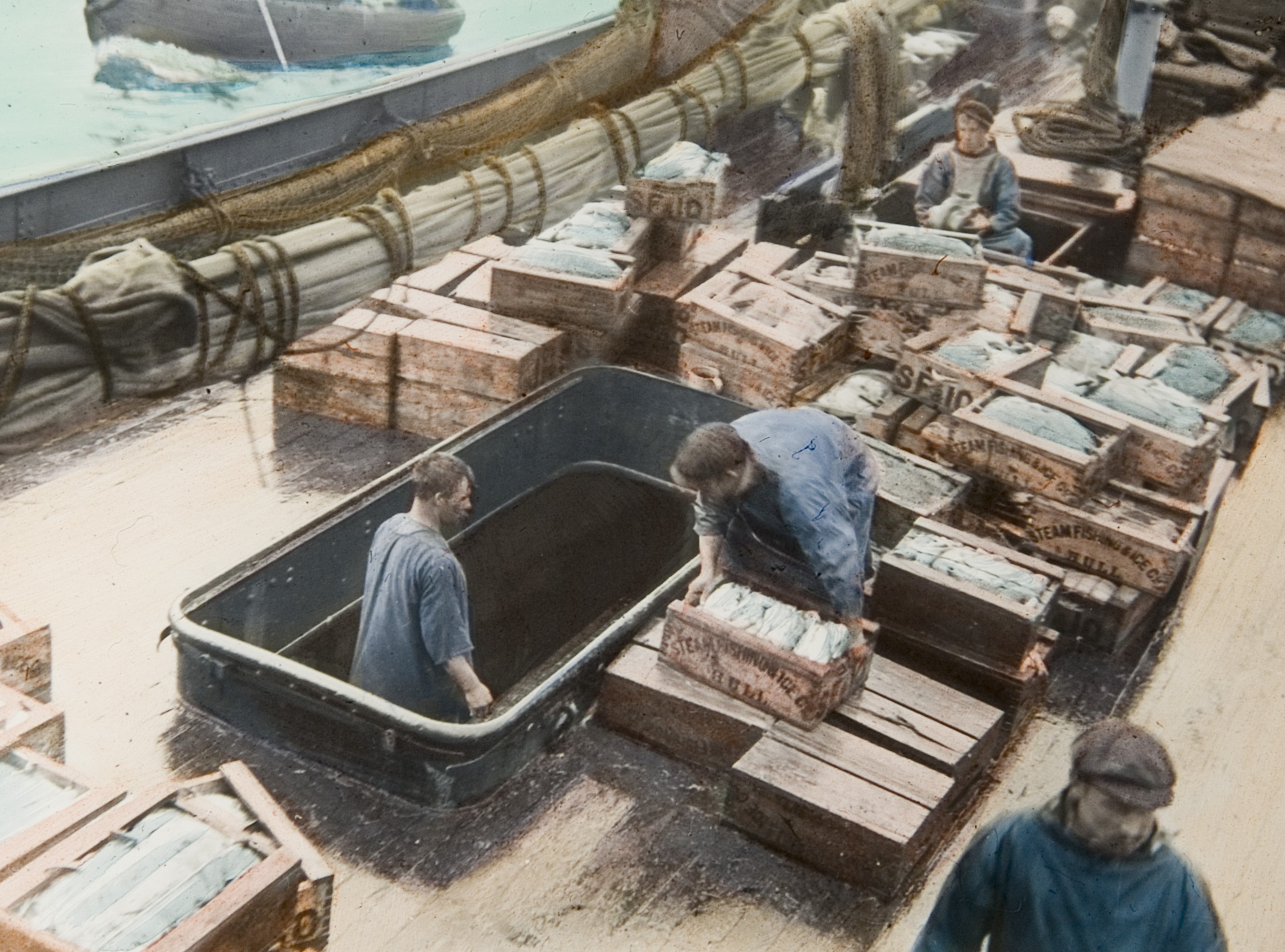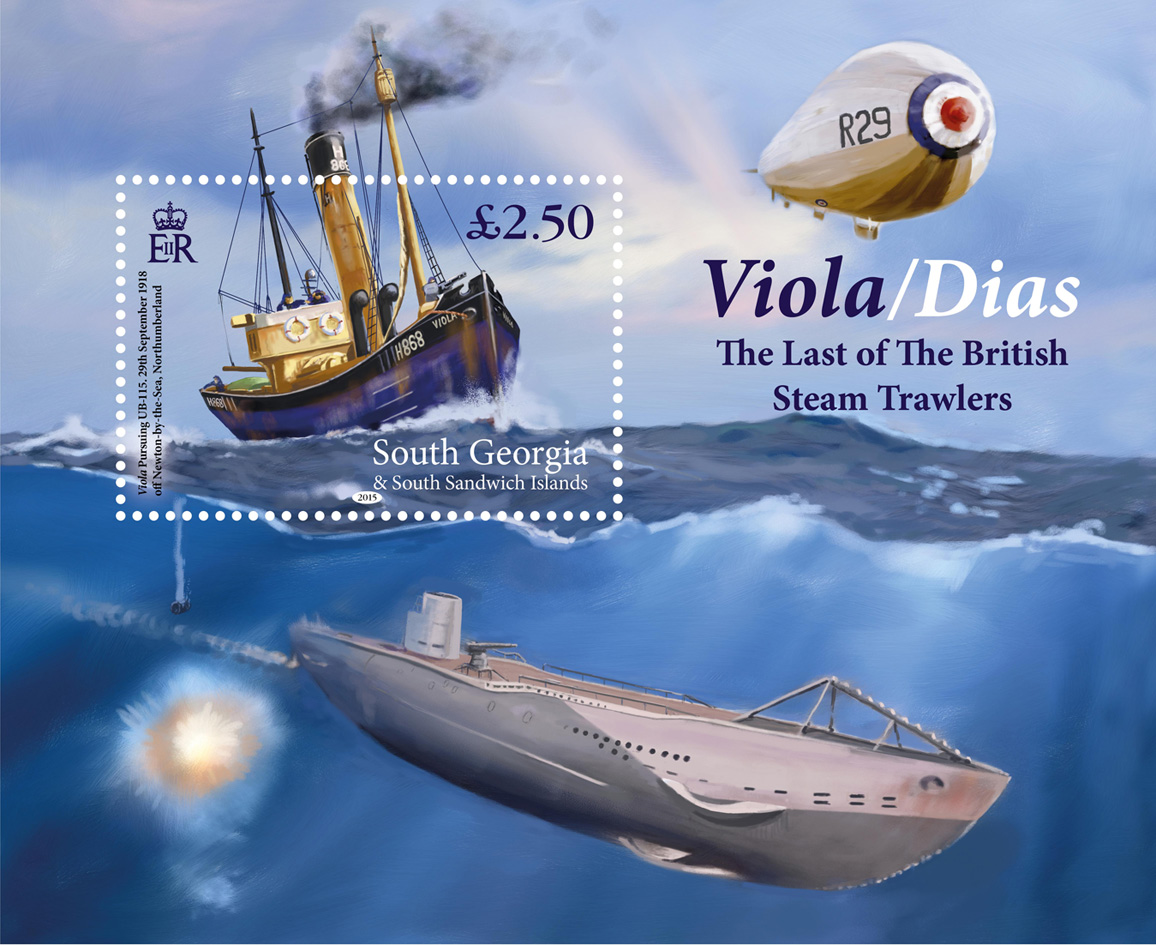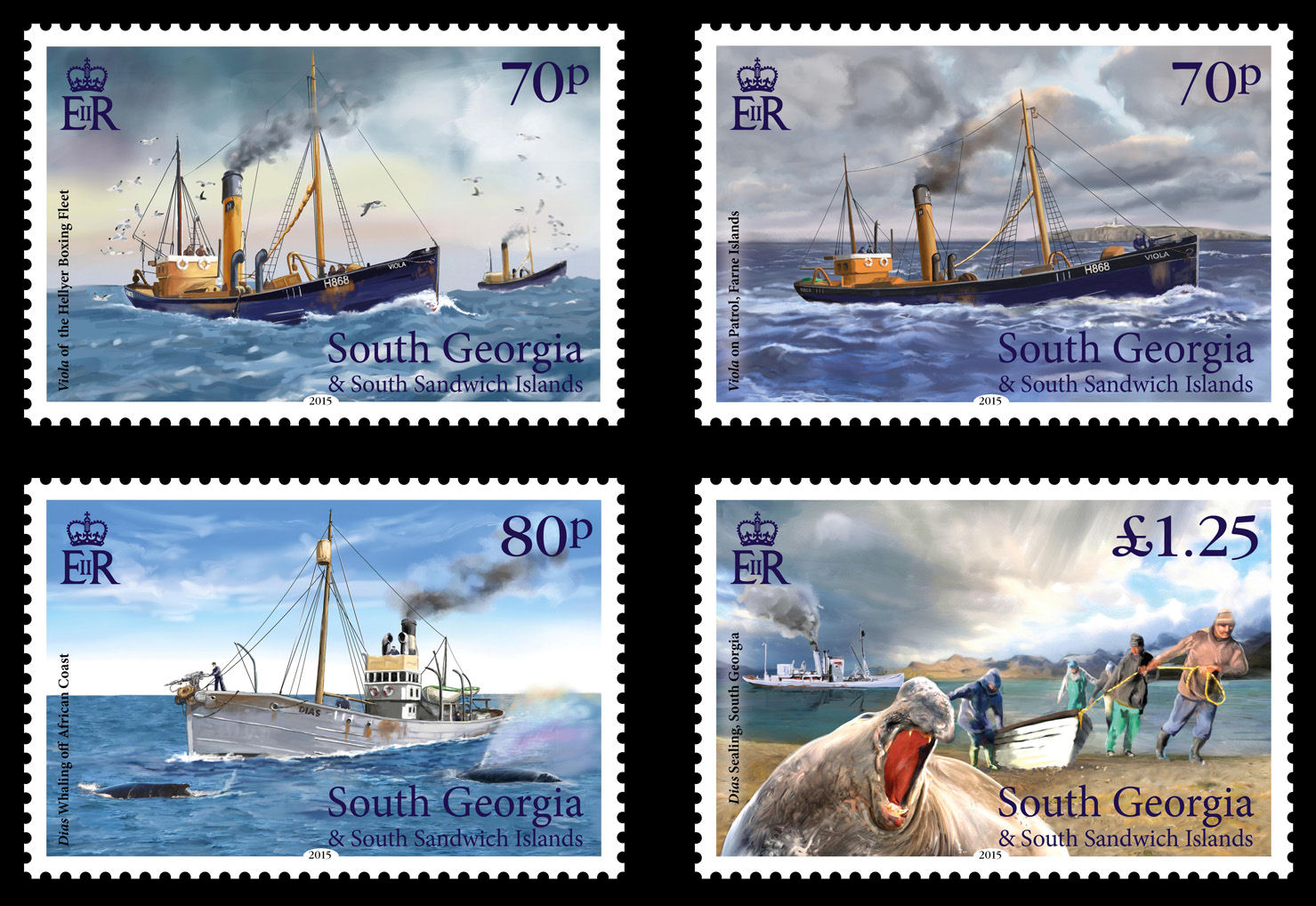Built in 1906 as a steam trawler in Beverley, Viola was originally part of a North Sea boxing fleet operated by the Hellyer Steam Fishing Company of Hull. Charles Hellyer, the owner named almost every vessel in his fleet after Shakespearean characters.
When the Great War broke out Viola was requisitioned and armed by the Admiralty. The trawler and its crew of fishermen were sent straight off into the fogs and uncertainties of the grim war at sea. For more than four years this little vessel was on the front line of the maritime conflict, steaming thousands of miles across seas infested with mines and U-boats. Viola patrolled first off the Shetland Islands and then later along the east coast of England. The vessel had numerous encounters with the enemy, being involved in the sinking of two U-boats. More than 3,000 fishing vessels and their crews saw active service during the Great War and today Viola is almost the only survivor.
After the return of peace Viola was sold to Norwegian owners and renamed Kapduen. She was one of the first Norwegian trawlers but within a few years was converted into a whale catcher and renamed Dias.
Her whaling career in the 1920s involved voyages to the African coast. In 1927 the vessel was sold to Compania Argentina de Pesca Sociedad Anonima, known as Pesca. They operated from Grytviken in South Georgia and primarily used the Viola for taking elephant seals.
Dias also assisted in expeditions to South Georgia and the South Atlantic. The first was the Kohl-Larsen Expedition of 1928–29 which took the first cinematographic film of the island. Others included the British South Georgia Expedition as well as biological work carried out by the Falkland Islands Government and finally the Bird Island Expedition.
In 1960 Pesca sold out to the British firm Albion Star. In 1964–65 the whaling station of Grytviken was closed and Dias, together with the other surviving vessels Petrel and Albatros (Norwegian spelling), was mothballed and laid up. During the Falklands War, South Georgia was, of course, briefly occupied by Argentina but British forces liberated the island in an action fought in the vicinity of the old trawler. Today Dias, along with the former whaling and sealing ships Albatros and Petrel still lie at Grytviken. Dias and Petrel were refloated in 2004 and hauled into their present position.
Viola/Dias has a unique place in 20th century maritime history. It is the oldest surviving steam trawler with its engines still intact and one of the few vessels still around which fought in the 1914-1918 conflict. Indeed, this little ship sailed off to war in September 1914 and has still to return to its home port from that Great War voyage.


The Viola won official recognition from the Government of South Georgia and the South Sandwich Islands (GSGSSI) with commemoration in a superb set of postage stamps.
The book, “VIOLA – The Life and Times of a Hull Steam Trawler”, co-written by Viola Trustee Dr Robb Robinson with Ian Hart, was part of the inspiration behind the decision of the Governor of the Falklands, Colin Roberts, to commission the stamps which were released in June 2015.
The book was presented to the Governor by surveyors who visited South Georgia in 2014 to examine the Viola and assess whether it was feasible to bring her to Hull.
Robb said: “The Governor was so taken by the story of the Viola that he commissioned a new set of stamps. As a result, I was approached by the company Creative Direction Worldwide which subsequently produced the stamps. The book publishers, Lodestar Books, supplied the images.
“I also advised on the artwork and we came up with four stamps and a first day cover which represent different stages in the vessel’s history as depicted in the book.”
The 70 pence stamps show the Viola steam trawler working as part of Hull’s Hellyer boxing fleet far out in the North Sea in around 1907 and then on patrol off the Farne Islands on the Northumberland coast in 1917. The 80 pence stamp has the vessel rigged as a Norwegian whaling vessel working off the coast of Africa in about 1925 and the £1.25 version shows the vessel working a sealing ship at South Georgia in about 1961.
The £2.50 first day cover is a graphic illustration of the vessel when it was involved with a number of other ships and the airship R29 in the sinking of the UB-115 off the Northumberland coast in September 1918.
Robb said: “The commemoration of the Viola’s exploits with the stamps is a wonderful way of raising the ship’s profile and telling its story.”

